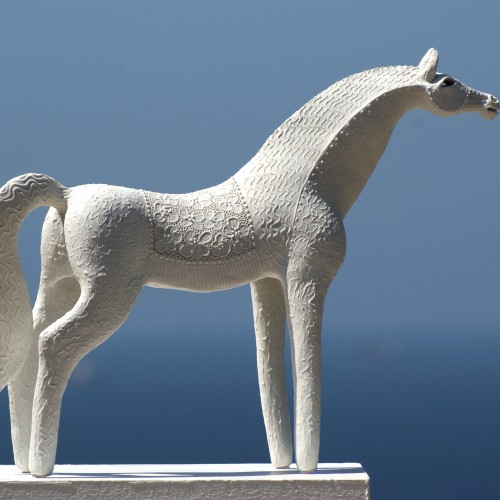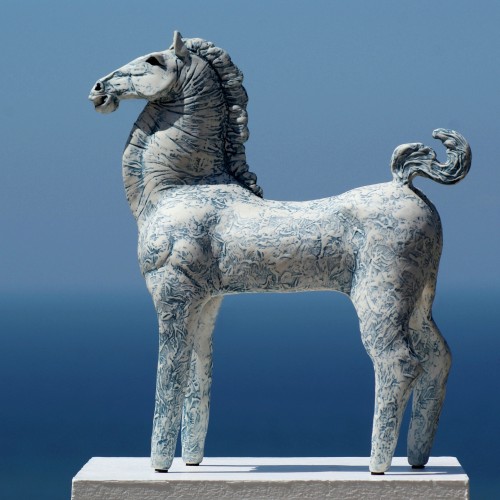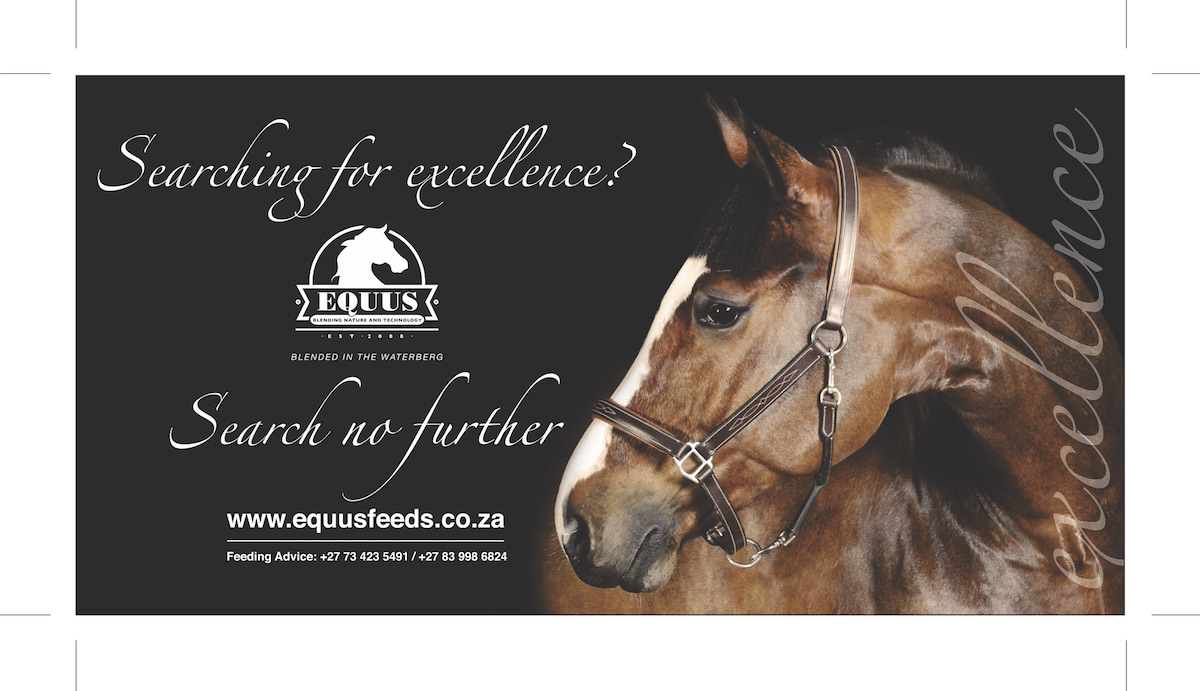Carol Hayward Fell
Born and living in Durban, Carol has a BA Fine Arts Degree in Ceramics and a Teaching Diploma from UKZN, Pmb. She was a lecturer for several years at the Durban University of Technology, where she taught Ceramics and Ceramic History. Now, in addition to producing ceramic sculptures for exhibitions and for sale in art galleries, she also teaches Painting and Drawing privately to adults from Carolart Studio, run from her home in Durban North.
For over 20 years, Carol was renowned for making her tall, coiled intricately patterned colourful porcelain vessels and sculptures, including her “Fish Wife” series of sculptures. For these, she received achieved numerous awards and many of these works found their way into the permanent collections of Public Art Museums in South Africa. Each work has always been fully signed and often dated. Carol has always been invited to participate in many art exhibitions on an annual basis. In addition to making ceramics, she has devoted time to drawing and has produced many oil painting
HORSES
In 2006, after doing a lot of drawing and oil painting, she started her first small sculptures of horses and became immediately entranced with this wonderful subject which has been represented throughout Art History. Since then, she has concentrated on exploring this vast subject and has aimed at achieving ways of interpreting the elegance and beauty and as well as increasing the size and complexity of my horses.
Hand built, in high–fired Stoneware and Porcelain clay, the horses reflect her life-long interest in the Art of Ancient Civilizations; Greek, Etruscan, Roman, Egyptian, Chinese etc. These ancient cultures all represented the horse quite differently and their shapes and forms have inspired many of her horses, giving them their expressive qualities; long necks, elegant heads, arched tails and slender bodies.
For the unique style of the white horses, she developed own technique of surface treatment. Over the dull buff stoneware clay used to construct her horses, she paints several layers of pure white porcelain clay, then she slip-trails fine intricately detailed surface textures, patterns as well as creating the decorative patterned saddlecloths. Using sharp tools, she also sometimes incises patterns through the layer of white porcelain clay to reveal the beige stoneware clay underneath.
Much of work over the years has included a humorous element and this is also reflected in the horses, especially those with other animals sitting on their backs – birds, cats, dogs, monkeys, rabbits etc, in whimsical situations. Some horses have female reclining nudes painted across their bodies.
In 2014, her work “White Horse with Vervet Monkeys, was awarded the top award, chosen by an overseas judge, as Best on Show, at the Corobrik Ceramic Association of Southern Africa’s National Ceramic Exhibition, held in Cape Town.
She has participated in invited exhibitions and has supplied galleries widely throughout SA and abroad in a career spanning 37 years.
Currently self-employed as an Artist and private Art teacher, Carol feels that she has achieved an ideal balance between teaching and creating new works. Her love of photography has also helped her accumulate a detailed documentation of almost every work she has ever made. She and her art students continue to inspire each other and she derives enormous pleasure from introducing adult beginners to art – seeing them grow fast in ability and interest. Her passion for tackling new subjects and pushing boundaries is often infectious and she is rarely daunted by technology; rather seeing how it can be used as a tool to further expose her art and that of others in her art groups to the general public.








